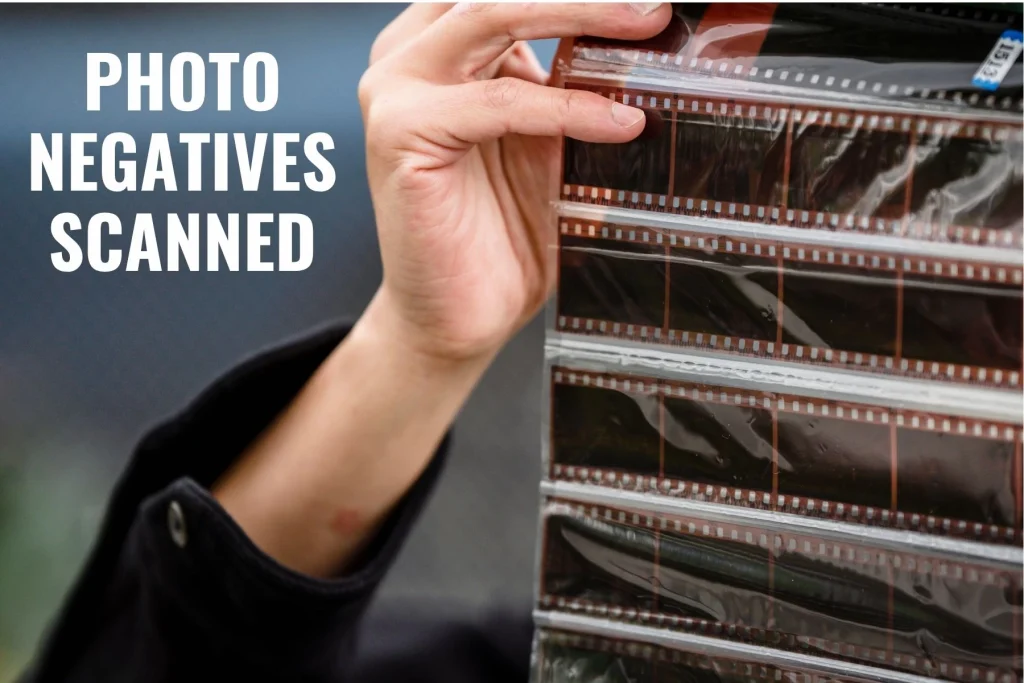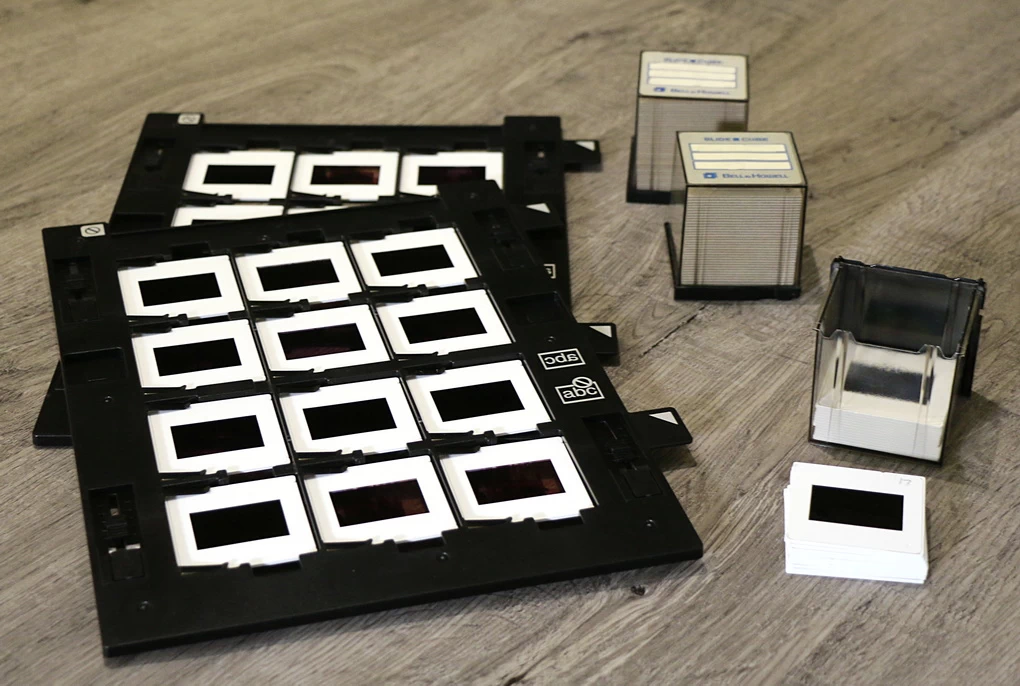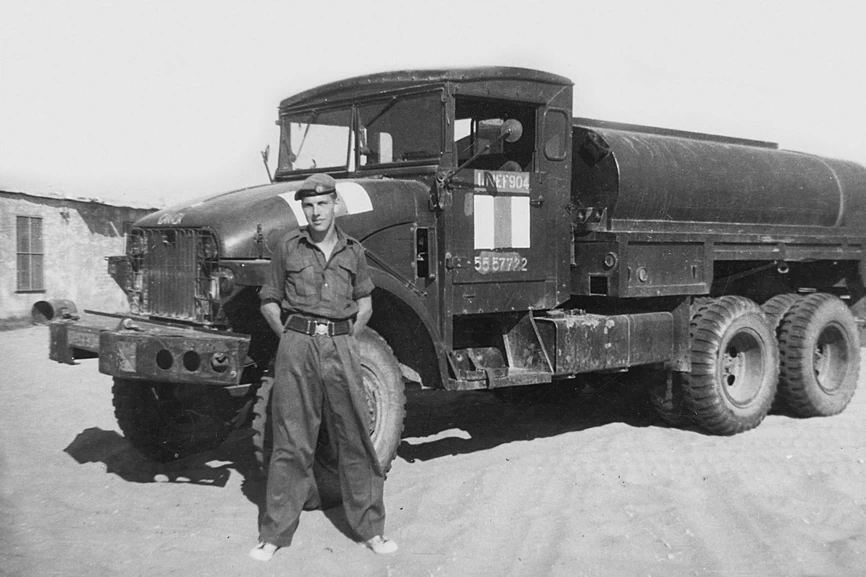Before we start learning whether Is It Better to Scan Your Photos from Negatives or from Prints? – a warning or two
If you want to preserve your family photos and memories by digitizing them, one of the biggest questions you’ll face is: should you scan from the negatives or from the prints?
Like many things in life, the answer isn’t simple. Both options have their advantages, and which one is best depends on the condition of your originals and what you hope to achieve.
BUT BE WARNED READ ALL THIS INFORMATION BEFORE YOU MAKE A DECISION!!
Let’s go through the pros and cons of scanning from negatives versus prints so you can make the right choice for your photographic memories.

Scanning Slides
If your images were shot on slides (transparencies), the decision is already made for you in most cases, you’ll need to scan the slides themselves. Most slides were never printed, so the original slide is the best (and often only) option for digitizing.

Scanning from Negatives, – The Ideal but Not Always Practical Option
In a perfect world, you would always scan from the original negatives. They are the first generation of the image, meaning they hold the most detail, color depth, and clarity. When in good condition, negatives can produce stunning, high-quality digital images.
However, that’s not the full story. Many people face real-world challenges that make scanning from negatives less practical:
1. Lost or Unorganized Negatives
Many families no longer have their negatives. Others have boxes or envelopes full of them, with no idea which negative belongs to which photo. Sorting and identifying them can be extremely time-consuming unless you plan to scan everything.
2. Damaged or Poorly Stored Negatives
Over the years, I’ve seen negatives in horrendous condition – water damage, smoke residue, mold, fingerprints, scratches, and dust. Unfortunately, any damage on a negative is magnified when scanned or printed.
A small scratch can show up as a large white line, or a bit of debris might cover someone’s face entirely. In those cases, the original negative won’t produce a better result than a clean print.
3. When Negatives Are in Great Shape
If your negatives were properly stored – in protective sleeves, in a cool, dry place – and haven’t been damaged, they can produce beautiful scans. A light dusting with an air blower is usually all that’s needed before scanning.
Scanning from Prints – Often the Best Practical Choice
If your negatives are lost, damaged, or simply too overwhelming to sort through, scanning from prints is often the smarter and more economical choice.
When scanning from prints, try to use the earliest generation available, ideally the original print made directly from the negative. Copies of copies (like photocopies) tend to degrade in quality with each generation getting worse.
Watch for Aging and Damage
Old prints can fade, yellow, or take on color shifts, especially if they were displayed in sunlight, exposed to smoke, or printed on lower-quality paper. Still, if the prints are in decent shape, scanning them can produce excellent digital versions.
Before scanning, use a light air blower to remove loose dust. Avoid wiping or trying to clean the surface yourself, more damage is often done trying to “fix” a print than just scanning it as-is and correcting digitally later.
Cleaning Negatives or Prints – Proceed with Caution
It is possible to clean both negatives and prints, but it takes the right materials, experience, and a gentle hand.
Negatives can sometimes be washed using Photo-Flo solution, but only if you know what you’re doing. One wrong move can permanently ruin the image.
Prints are even riskier. Darkroom prints made with photo chemicals can sometimes be cleaned carefully, but inkjet prints will be destroyed by even a drop of water. Since it’s hard to tell which type of print you have, it’s usually safest to scan first and then clean up any damage digitally.
What I Recommend After 40+ Years in Professional Photo Scanning Is It Better to Scan Your Photos from Negatives or from Prints?
After decades of experience at Paterson Photography / First Choice Photo Lab in Lethbridge, here’s what I generally recommend:
- For most people, scanning from prints is the best, most efficient option. It’s faster, easier, and often more cost-effective, especially if you’re dealing with hundreds or thousands of photos.
- If you have special images, like weddings, milestone events, or portraits, and the negatives are in good condition, scan both the prints and the negatives.
This gives you the sharpness of the original negative and the color correction or retouching that was done on the print.
Many professional photographers in the past retouched prints extensively. Scanning only the negative means you’ll lose that finished look, and recreating it in Photoshop takes advanced skill.
A Quick Word About Scanning Settings
There’s a lot of bad advice online about scan resolution. Many “experts” say to scan everything at 300 or 600 DPI, but that’s far too simplistic.
For example, scanning an 8×10 print at 350 DPI will give you a large, high-quality file around 30 MB. But if you scan a negative at 350 DPI, you’ll end up with a file that’s practically useless for printing.
Instead of focusing on DPI, pay attention to final file size:
- For 8-bit color, aim for files around 30–60 MB.
- For 16-bit color, aim for 60–90 MB.
This ensures you get high-resolution images suitable for archiving, printing, or restoration.
Need Help Scanning Your Photographic Memories?
Whether you’re working with slides, negatives, or prints, I can help you get the best possible digital copies of your precious memories.
At Paterson Photography / First Choice Photo Lab in Lethbridge, Alberta, we use professional-grade equipment and decades of experience to ensure your scans look their absolute best — safely and affordably.
If you have questions about your scanning project or would like to have it done professionally, I’d be happy to help.
Contact Paterson Photography / First Choice Photo Lab in Lethbridge today to preserve your photographic memories for generations to come.
